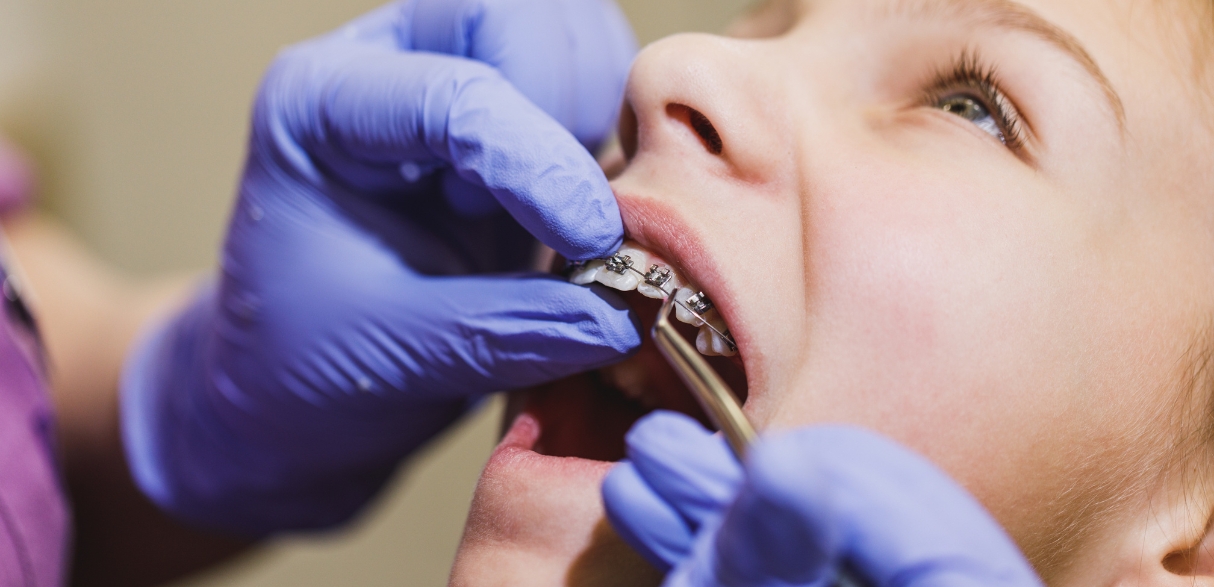

Orthodontic emergencies can strike at any time, causing discomfort and anxiety. Whether it’s a poking wire or a loose bracket, knowing how to handle these issues at home can save you a trip to the orthodontist and keep your treatment on track. Imagine your child complaining about a sharp wire poking their cheek right before bedtime, or an important event coming up and a bracket suddenly becomes loose. These scenarios can be daunting, but with a little knowledge and preparation, you can tackle these emergencies with confidence. Dive into our comprehensive guide to learn practical tips and solutions for managing common orthodontic problems right from the comfort of your home.
Understanding Orthodontic Emergencies
Orthodontic emergencies vary in severity, from minor discomforts to issues requiring immediate professional attention. It is essential to differentiate between these to ensure appropriate action is taken. Minor problems can often be resolved at home, while more severe issues may need prompt orthodontic care.
Common Orthodontic Issues
Orthodontic emergencies can include poking wires, loose brackets, lost elastics, and mouth sores. These issues can cause discomfort but are generally not severe. Knowing how to address these common problems can prevent unnecessary trips to the orthodontist and alleviate discomfort.
Handling Poking Wires
Poking wires are a frequent issue for individuals with braces. These wires can irritate the cheeks and gums, causing significant discomfort. Fortunately, there are simple steps to manage this problem at home.
Using Orthodontic Wax
Orthodontic wax is a useful tool for managing poking wires. Applying a small amount of wax to the end of the wire can create a smooth barrier, preventing irritation. Ensure the area is dry before applying the wax to enhance its adherence.
Tweaking the Wire
In some cases, you might be able to gently push the wire back into place using a clean pencil eraser. Be cautious not to apply too much force, as this could cause the wire to break or become further displaced.
Managing Loose Brackets
Loose brackets can occur if the adhesive bonding the bracket to the tooth fails. This issue can cause the bracket to slide along the wire, leading to discomfort and potential misalignment of teeth.
Securing the Bracket
If a bracket becomes loose, it can be temporarily secured using orthodontic wax. Place a small piece of wax over the bracket to hold it in place until you can visit your orthodontist. Avoid sticky or hard foods that could further dislodge the bracket.
Avoiding Further Damage
To prevent additional damage, be mindful of your diet. Avoiding hard, crunchy, or sticky foods can reduce the risk of brackets becoming loose or wires breaking.
Dealing with Lost Elastics
Elastics, or rubber bands, are often used in orthodontic treatment to apply pressure and move teeth. If an elastic breaks or is lost, it can disrupt treatment progress.
Replacing Elastics
Keep extra elastics on hand to replace lost or broken ones immediately. Following your orthodontist’s instructions on elastic wear is crucial for effective treatment. If you run out of elastics, contact your orthodontist for a replacement supply.
Maintaining Elastic Use
Consistency in wearing elastics is key to successful orthodontic treatment. Skipping days or not wearing them as instructed can prolong treatment time and impact the results. Always follow the guidelines provided by your orthodontist.
Alleviating Mouth Sores
Mouth sores can develop due to irritation from braces or other orthodontic appliances. These sores can be painful and make eating and speaking uncomfortable.
Rinsing with Salt Water
A simple saltwater rinse can help soothe mouth sores. Mix a teaspoon of salt in a glass of warm water and rinse your mouth several times a day. This can reduce inflammation and promote healing.
Using Oral Anesthetics
Over-the-counter oral anesthetics can provide temporary relief from the pain of mouth sores. Apply a small amount of the anesthetic to the affected area to numb the pain. Be sure to follow the instructions on the product label for safe use.
When to Seek Professional Help
While many orthodontic issues can be managed at home, certain situations require professional attention. Understanding when to seek help is crucial for maintaining oral health and ensuring treatment progresses smoothly.
Severe Pain or Discomfort
If you experience severe pain or discomfort that cannot be alleviated with at-home remedies, contact your orthodontist. Persistent pain could indicate a more serious issue that needs professional evaluation.
Broken Appliances
Broken appliances, such as retainers or expanders, can impact your treatment progress. If any part of your orthodontic appliance breaks, schedule an appointment with your orthodontist to repair or replace it promptly.
Significant Swelling or Infection
Swelling or signs of infection, such as pus or fever, should be addressed immediately. These symptoms could indicate an infection that requires antibiotics or other medical treatment. Contact your orthodontist or seek emergency dental care if you notice significant swelling or signs of infection.
Preventive Measures for Orthodontic Care
Preventing orthodontic emergencies involves proper care and maintenance of your braces or other orthodontic appliances. Implementing preventive measures can reduce the likelihood of experiencing issues.
Maintaining Good Oral Hygiene
Good oral hygiene is essential for preventing problems like gum disease and tooth decay, which can complicate orthodontic treatment. Brush and floss regularly, and consider using an interdental brush or water flosser to clean around braces effectively.
Following Dietary Restrictions
Following dietary restrictions is crucial for preventing damage to braces and wires. Avoid hard, crunchy, or sticky foods that can dislodge brackets or break wires. Opt for softer foods that are less likely to cause issues.
Regular Orthodontic Check-ups
Regular orthodontic check-ups allow your orthodontist to monitor your progress and address any potential issues before they become emergencies. Attend all scheduled appointments and communicate any concerns to your orthodontist.
Emergency Orthodontic Kit Essentials
Having an emergency orthodontic kit on hand can help you manage minor issues effectively at home. Here are some essential items to include in your kit.
Orthodontic Wax
Orthodontic wax is invaluable for protecting your cheeks and gums from poking wires and loose brackets. Always keep some on hand and replace it as needed.
Tweezers and Small Scissors
Tweezers and small scissors can be helpful for handling small orthodontic components, such as elastics. They can also assist in repositioning wires or cutting excess wire lengths.
Over-the-Counter Pain Relievers
Over-the-counter pain relievers, such as ibuprofen or acetaminophen, can help manage discomfort associated with orthodontic emergencies. Follow the dosage instructions on the label for safe use.
Educating Yourself and Your Family
Educating yourself and your family about managing orthodontic emergencies can empower you to handle issues confidently. Knowing what to do in various situations can alleviate stress and ensure that minor problems do not escalate.
Providing Instructions
If you have children undergoing orthodontic treatment, provide clear instructions on how to handle common issues. Ensure they know how to use orthodontic wax and understand the importance of maintaining good oral hygiene.
Encouraging Communication
Encourage open communication with your orthodontist. Do not hesitate to contact them if you have questions or concerns about your treatment. They can provide guidance and support to help you manage any issues that arise.
The Importance of Timely Intervention
Timely intervention in orthodontic emergencies can prevent complications and ensure that treatment progresses as planned. Addressing issues promptly can also reduce discomfort and prevent long-term problems.
Monitoring Progress
Regularly monitor your progress and report any changes or concerns to your orthodontist. Keeping track of your treatment can help identify potential issues early and ensure that they are addressed promptly.
Staying Informed
Stay informed about your orthodontic treatment and any potential issues that may arise. Educate yourself on how to handle common emergencies and keep your emergency kit well-stocked.
By following these guidelines, you can manage orthodontic emergencies effectively at home and ensure that your treatment progresses smoothly. Remember to consult your orthodontist for professional advice and support when needed.
To ensure that your child’s orthodontic treatment remains on track, it’s essential to follow these tips and maintain regular visits to a South San Francisco pediatric dentist. They can provide the necessary care and adjustments to ensure a healthy, beautiful smile.






